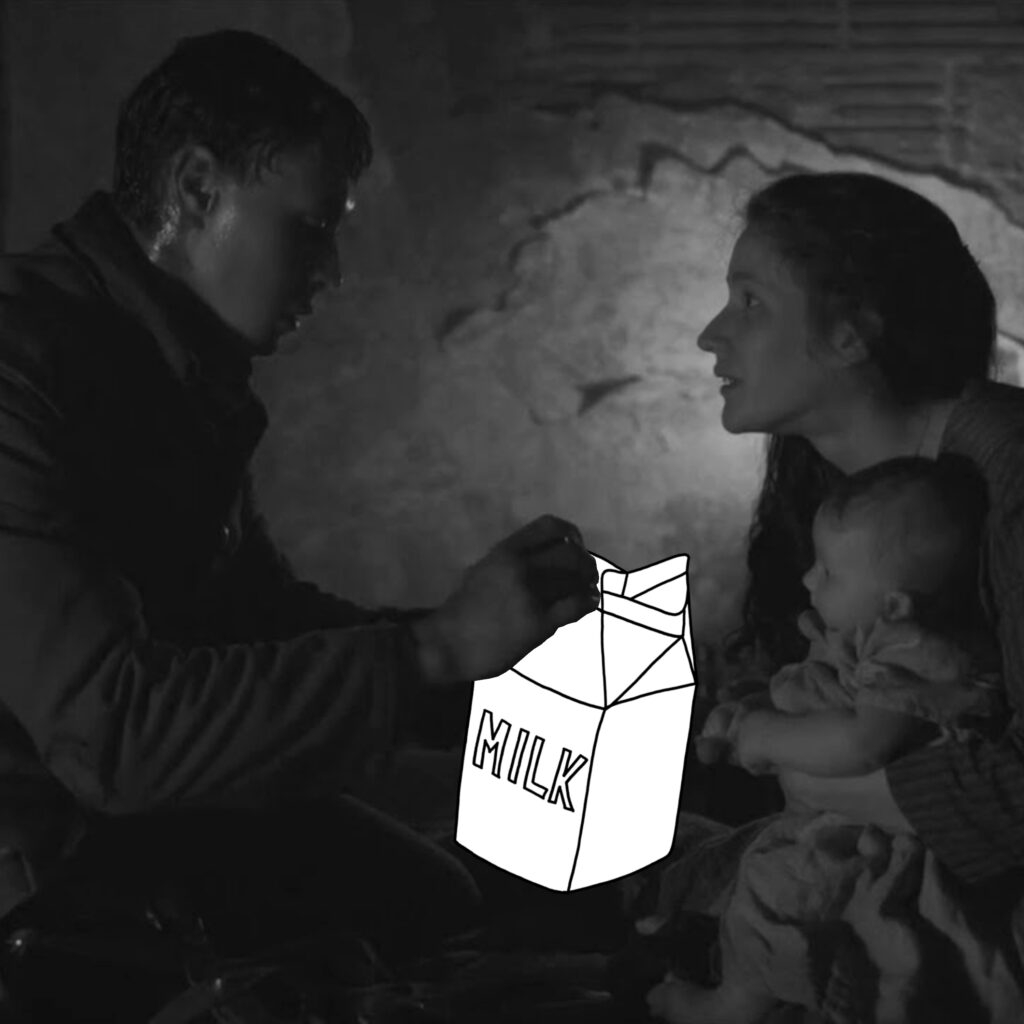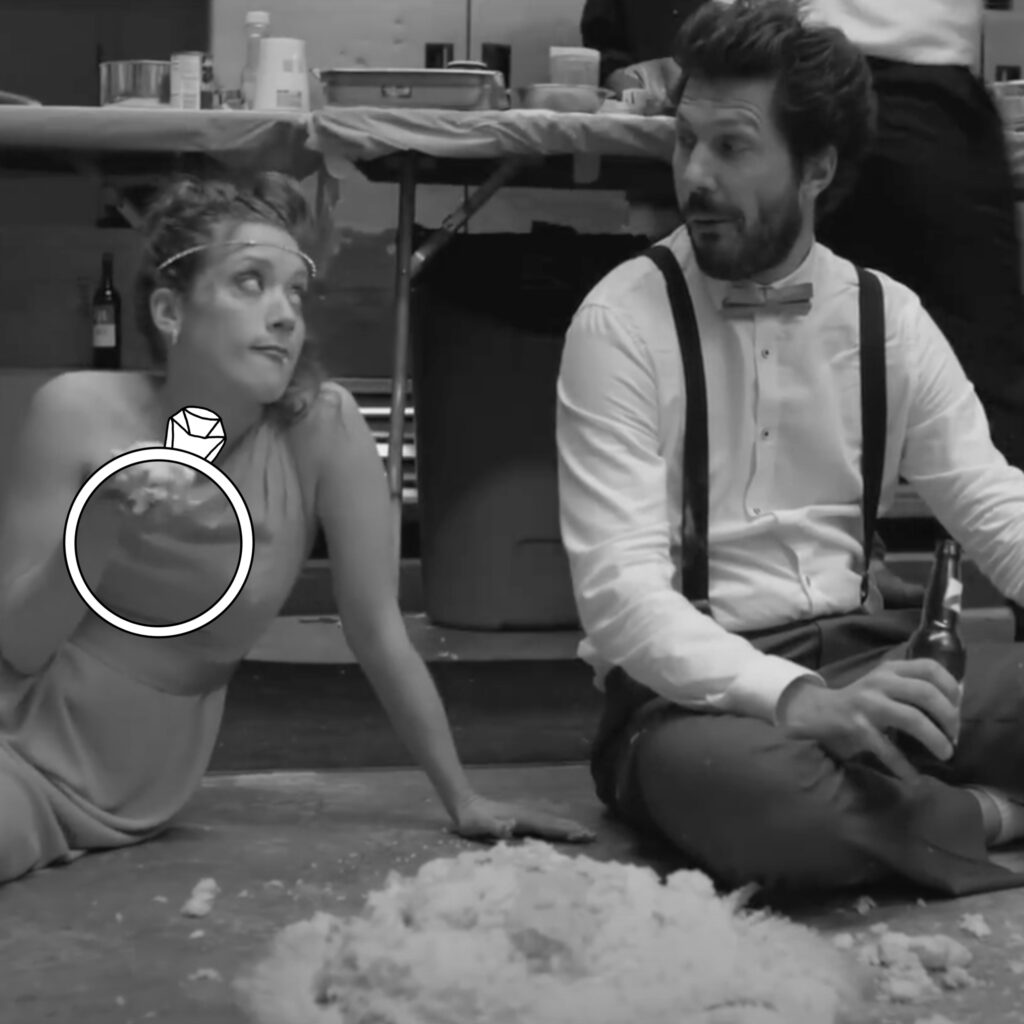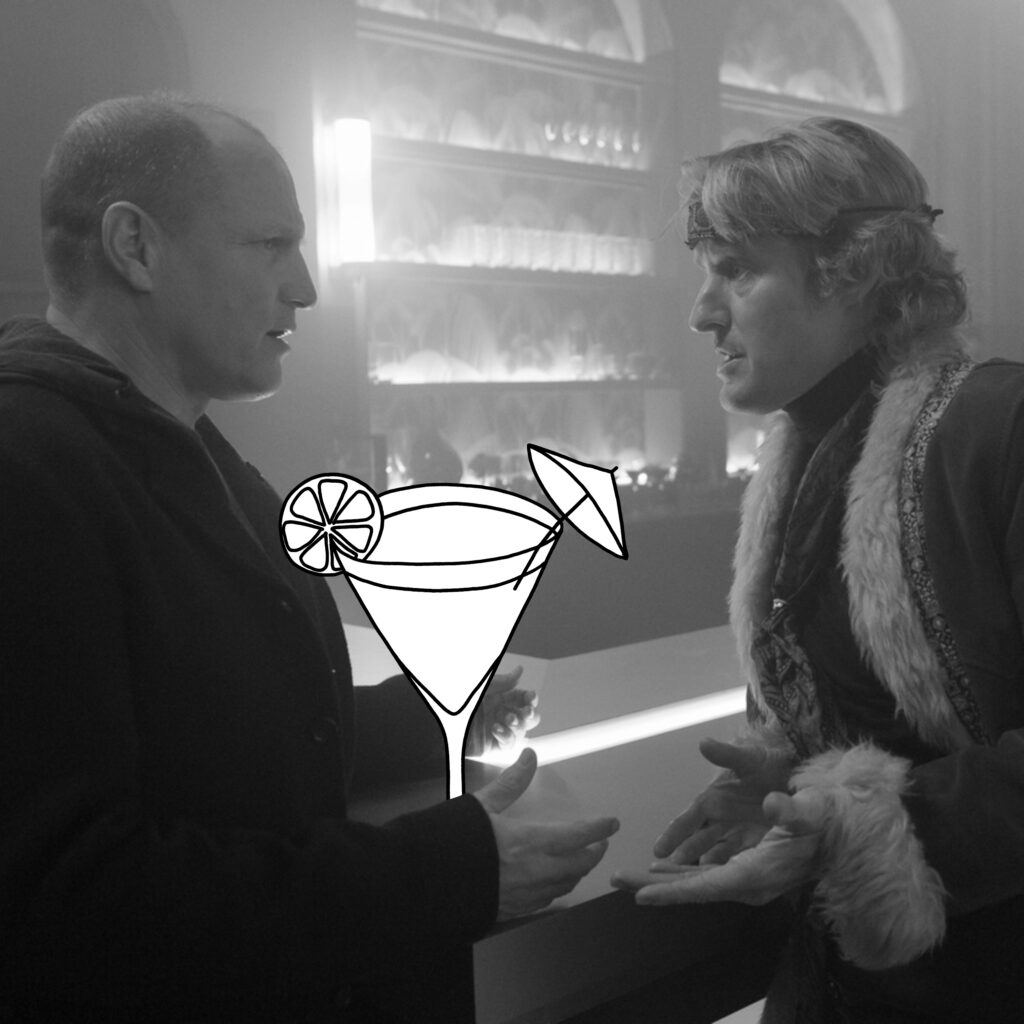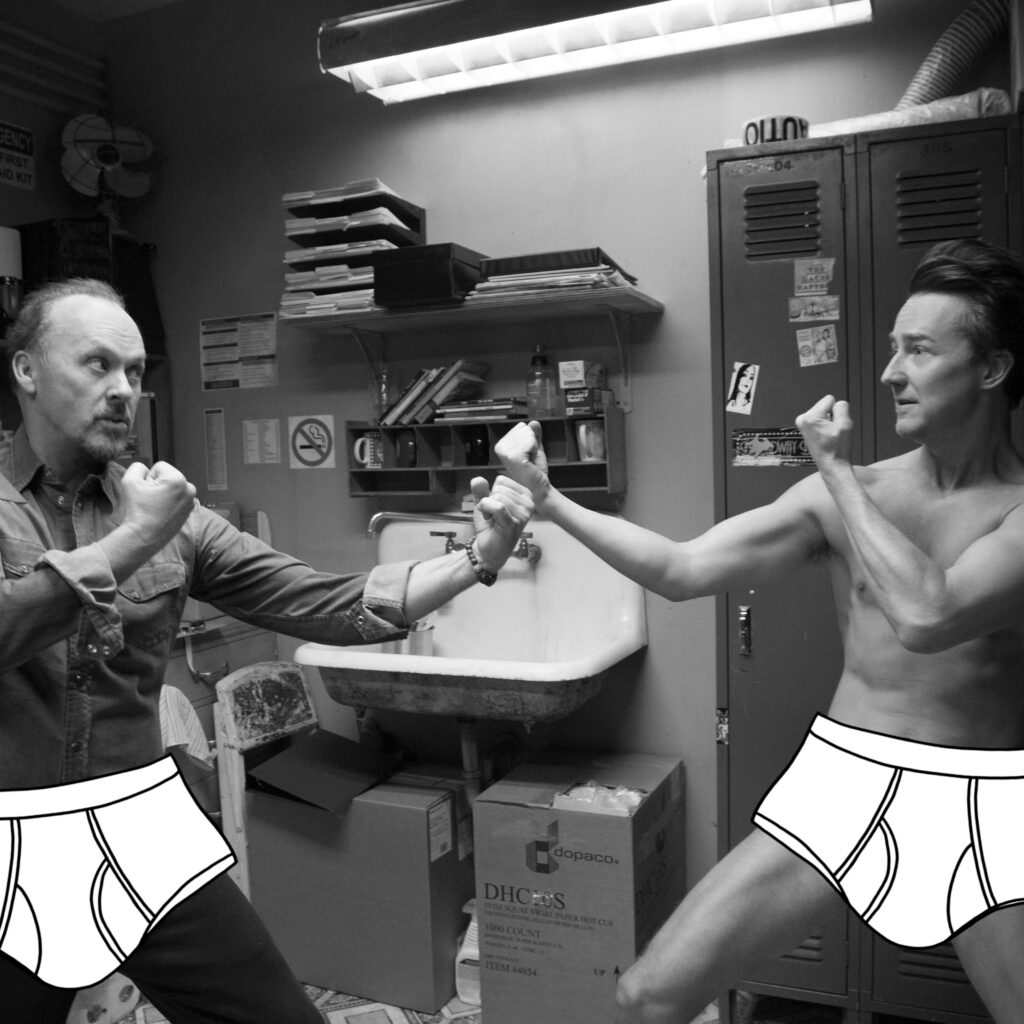| Nicole Rojas-Oltmanns |

“Here’s some inexplicably fresh milk that I happened to find on my walk through a war-torn land where all of the other cows had been killed. Hope you and the baby make it out of this rubble that used to be a city which is currently infested with German soldiers.”
1917 plays at the Trylon Cinema from Sunday, August 18th, through Tuesday, August 20th. Visit trylon.org for tickets and more information.
You may have noticed the influx of one-shot and long-shot films in the past two decades. We have camera technology to thank for this. Now film can be made in one go. You know, like theatre has always been done.
One-shot and long-shot cinematography pose so many challenges because, unlike theatre, it has to be filmed, doesn’t take place on a stage, and the finished product is expected to be perfect and final.
Although not without problems, the film 1917 (2019, directed by Sam Mendes) handled these challenges inventively, and avoided most of the pitfalls of one-shot and long-shot films:
1. Mundane Middle: The action and dialogue seem to spin their wheels in the middle as the actors get tired.
2. Improvisation over Script: Most actors are not improv artists, obviously.
3. Blair Witch Cinematography: The Steadicam was invented 50 years ago, but maybe they want shaky cameras for the wonderful effect created.
4. Immersive, Voyeuristic, Claustrophobic, or Incestuous: Such fine lines.
5. The Impassage of Time: Real-time is great when used intentionally, and not just because you can.
6. Hallways, Stairs, and Doors: Too much of either and you begin to wonder why you are watching a film when you could do this yourself.
7. Watching People Walking: Seriously, this may be why cuts were invented.
A Selection of One-Shot Films
Timecode (2000, directed by Mike Figgis)
An experimentation with four real-time one-shots presented simultaneously, turning the volume up on one at a time to show you where to pay attention. Experimentation like this is important, but not if you care about plot and dialogue.
This film struggled:
Mundane Middle: Actually, from beginning to just near the end.
Improvisation over Script: The whole thing was improvised by actors who are not improv artists.
Blair Witch Cinematography: Severe, often failing to frame the speaker or action.
Immersive, Voyeuristic, Claustrophobic, or Incestuous: Everything, except immersive. We feel as though we are watching the characters’ private and sloppy conversations. The settings feel tight. We are left wondering why the characters are so obsessed with each other and themselves.
The Impassage of Time: The real-time aspect was not used intentionally there was nothing pressing, not even ticking bombs.
Watching People Walking: Yes, because of the four screens, there was always someone walking.
Hallways, Stairs, and Doors: The setting mostly made doors and doorways prominent.
Russian Ark (2002, directed by Alexander Sokurov)
Creatively covering hundreds of years of Russian history in one setting. This was the first one-shot feature-length film and the longest shot in film history. As impressive as it is dull.
Most notable problems:
Mundane Middle: Or, in this case, throughout.
Hallways, Stairs, and Doors: The movie is made of hallways, stairs, and doorways.
Watching People Walking: No comment.
Evaded:
Improvisation over Script: There was a completed script and it was used.
Blair Witch Cinematography: The camera is smooth as we follow the characters as if we are there.
The Impassage of Time: Time is passed cleverly through movement to different spaces within the museum.
Immersive, Voyeuristic, Claustrophobic, or Incestuous: Immersion is attainted by first-person shots that make it feel like you are moving with and between the characters.

The Wedding Party (2016, directed by Thane Economou)
The film follows a large wedding party as they make sense of their relationships and past selves as a way to move forward in their lives.
Problems:
Mundane Middle: The film slows considerably in the middle as if the characters forget where they are going and just sit down to a nice chat.
Improvisation over Script: The film certainly had a script, but it left too much room for improvisation. This led to repetition, a lot of repetition.
Immersive, Voyeuristic, Claustrophobic, or Incestuous: We feel like outsiders looking in, sometimes a little too closely, other times too far away.
Watching People Walking: This made up half of the film, but at least it carried the plot forward.
Done well:
Blair Witch Cinematography: Smooth, with the actors tracked.
The Impassage of Time: Real-time worked for the drama of this film as the characters just had to hold their shit together for the length of the reception. Obviously, easier said than done.
Hallways, Stairs, and Doors: Avoided by having most of the film take place outside.

Lost in London (2017, directed by Woody Harrelson)
This film is based on a night Woody Harrleson spent in London in which he was found out by his wife and jailed. It was even live-streamed. Harry Potter managed to make an appearance as did Willy Nelson. Just to clear some factual details, Woody didn’t run into Owen Wilson that night, it was actually Leonardo DiCaprio and Toby Maguire.¹ Also, yes, that really is Bono’s voice. He was prerecorded.²
Negatives:
Mundane Middle: We’ll just say the film could have used some editing.
Improvisation over Script: It was hard to tell which parts were supposed to be improvised and the repetition was tedious. Some of the banter between Woody and Owen is fantastic, but it doesn’t make up for the rest. You’re right Woody, Wes Anderson is weird and that’s why we love him.
Blair Witch Cinematography: Yes, even blurry at some moments. Too many locations. Too many cars.
Immersive, Voyeuristic, Claustrophobic, or Incestuous: Immersive in an annoying way. I was there with him, but I didn’t want to be.
Hallways, Stairs, and Doors: Theaters, bars, and cars.
Watching People Walking: Yes.
Positive:
The Impassage of Time: Time passes fluidly partly because it was done mostly in real-time and moved locations frequently.
A Selection of Long-Shot Films
Rope (1948, directed by Alfred Hitchcock)
Two friends kill another friend to try to pull off a murder without getting found out. They carry on with a dinner party for the victim’s friends and family. Hitchcock believed the suspense of the event would be lost through obvious cuts and editing.³
Avoided pitfalls:
Mundane Middle: He kept the film short, it helped.
Improvisation over Script: Scripted, nice job.
Blair Witch Cinematography: Of course not.
Immersive, Voyeuristic, Claustrophobic, or Incestuous: Immersive as you lose yourself to the plight of the murderers.
The Impassage of Time: The film is done in real-time, and he kept everything brief and tight, creating a sense of urgency.
Hallways, Stairs, and Doors: The setting was one room.
Watching People Walking: No.

Birdman or (The Unexpected Virtue of Ignorance) (2014, directed by Alejandro G. Iñárritu)
An actor transitions from the screen to theatre. He may or may not have superpowers. This film thinks deeply about notoriety, art, manipulation, and possibly love.
Where it fell:
Immersive, Voyeuristic, Claustrophobic, or Incestuous: Claustrophobic and incestuous, see Mundane Middle and Hallways, Stairs, and Doorways below.
Hallway, Stairs, and Doors: Set in the guts of a theatre, that’s all there is.
Watching People Walking: A little too much of this, but the best scene in the film is when the protagonist is just walking…on Broadway, in his underwear.
Where it flew:
Mundane Middle: Avoided with the clever use of fighting in your underwear and kissing people you probably shouldn’t.
Improvisation over Script: Favored script, which made for excellent dialogue and quick banter from great actors.
Blair Witch Cinematography: Not at all.
The Impassage of Time: Invisible splices used to create jumps in time were successful. Sometimes with overlapping timescapes created by characters overhearing dialogue of another in the future as the camera pans.
Beyond the Infinite Two Minutes (2020, directed by Junta Yamaguchi)
A shop manager discovers his computer monitor shows him two minutes into the future through the television in the shop downstairs. Ultimately discovering the power and problem of the future. As preposterous as it is poignant and adorable.
Not so great:
Blair Witch Cinematography: Shot on a cell phone, so there had to be a little.
Hallways, Stairs, and Doors: Half of the film, seriously.
Watching People Walking: Yes, see Hallways, Stairs, and Doors above.
Kinda great:
Mundane Middle: Kept short with enough action to keep focused.
Improvisation over Script: Thoroughly scripted because of the looping nature of the content.
Immersive, Voyeuristic, Claustrophobic, or Incestuous: The characters were likable and relatable, made it easy to dive in.
The Impassage of Time: Done in really-real-time which made sense for two minute time travel.
1917 (2019, directed by Sam Mendes)
Two WWI British messengers are sent to warn of a strategic German withdrawal.
Pitfalls surrendered to:
Watching People Walking: They are WWI messengers. It is nearly all walking.
Avoided Pitfalls:
Mundane Middle: Instead there is a string of artificial action, what we unaffectionately call, “A Wolves Moment.” A reference to the totally unnecessary scene in which wolves attack the few remaining survivors in The Day After Tomorrow (2004, directed by Roland Emmerich). The middle was all Wolves Moments. Our protagonist crosses over a river, battles, and eventually falls in. Then he goes over a waterfall. Yes, seriously, over a waterfall, like every cartoon you’ve ever seen. Emerging confusingly on the opposite bank of the river, where he was in the first place, and stumbles upon the group of soldiers he was sent to find. Anyone following this map?
Improvisation over Script: Like theatre, the script matched the length of the set and the set matched the length of the script. Sam Mendes said, “The world must be crafted around the rhythm of the script.”4 He was right.
Blair Witch Cinematography: Used the brand-new-at-the-time ARRI ALEXA Mini LF Camera.5 It is unarguably a beautifully shot film.
Immersive, Voyeuristic, Claustrophobic, or Incestuous: Immersive, we are right there with them.
The Impassage of Time: Movements over land are shortened to allow for more plot. To create seamless cuts, the camera had special mounts made so it could be moved between cranes, people, and vehicles within one long-shot.
Hallways, Stairs, and Doors: Only when it makes sense.
Endnotes
1 Clark Collis, “Why Woody Harrelson made a movie about the ‘least fun night’ he ever had,” Entertainment Weekly, May 25, 2018, https://ew.com/movies/2018/05/25/woody-harrelson-lost-in-london
2 Jackson McHenry, “I Went to Woody Harrelson’s Curious Livestreamed Movie, Lost in London,” Vulture, January 20, 2017, https://www.vulture.com/2017/01/watching-woody-harrelsons-livestreamed-movie.html
3 Roger Ebert, “Rope,” June 15, 1984, https://www.rogerebert.com/reviews/rope-1948
4 “1917 Behind-the-scenes Extended Featurette,” IMDB, accessed July, 2024, https://www.imdb.com/video/vi724157721/
5 “1917 (2019),” last modified April 25, 2024, https://shotonwhat.com/1917-2019
Edited by Olga Tchepikova-Treon

This was hilarious, delightful, and informative! I found out about some movies I want to see…and some I want to avoid. Loved it!